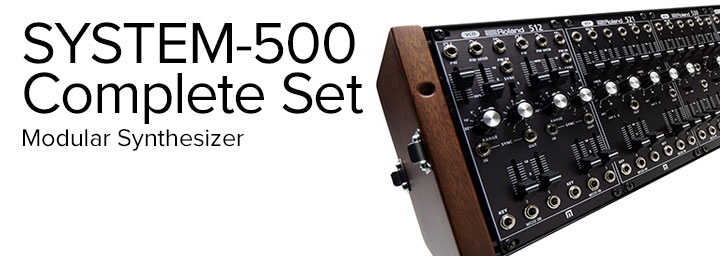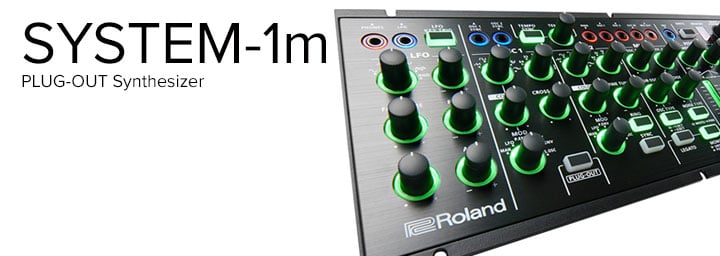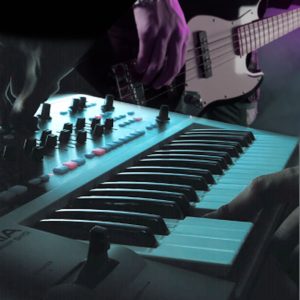There is no doubt that the popularity of modular synthesis is rising. You don’t have to look far to see the enormous interest in these instruments, in clubs, studios and bedrooms and worldwide. But what exactly are these boxes of coloured cables and knobs? Are they worth the investment? Do they live up to their hype?
Musical fads come and go. Interestingly though, modular synthesis has come full circle. Due to its limitless nature, modular synthesis will virtually never date. It is always able to reinvent itself and herein lies its true beauty and power. There is no right or wrong when using modular. With that in mind though, it does require at least an interest in synthesizers. A passion for sound creation and a desire to expand your knowledge and understanding of synthesis is also important!
Modular synthesis might seem daunting to you if you’ve never worked with it before. Like most things, the more you learn and increase your knowledge of modular synthesis, the more comfortable you will become. Once you understand the core aspects, it will all become much clearer. So let’s get started!
Contributed by Hannah Lockwood for the Roland Australia Blog
Modular Synthesis = No More Need for Presets
Stepping into the world of modular marks a move away from the standard presets that you may be familiar with using on other synthesizers. There is nothing wrong with preset sounds and they are an incredibly useful tool, especially when you’re starting out. However, nothing beats the feeling of creating your very own patch from scratch.

Patches that you create are patches that no one else can access. They are uniquely and solely your own. It is these kinds of patches that take your music to new areas and help to assert your own distinct sound.
Your First Steps When Starting With Modular Synthesis
Like any instrument purchase, your first consideration is probably the most important one. What exactly do you want from your modular synth? Look at your pre-existing setup and consider the following.
What are you going to use it for? There are many different end uses for modular, with no right or wrong. Do you want a single voice monosynth or something capable of producing polyphony? Perhaps you want an effects rack or a complex modulation source? Do you want to focus on producing drums, lead lines or pads? Are you planning to use the modular for studio work, live performances or both? Do you want Ableton Live connectivity? Or, do you want a standalone synth? Will you use an external keyboard or sequencer to send Pitch and Gate information?
There are so many options and pathways you can explore. As such, it’s good to have an idea of what you want from the instrument. You might even change direction once you’ve started. This is fine! Planning will provide you with some direction during the early stages of creating your system. Asking these questions early will help you to determine which modules you will need to get started.
It will also help you to decide where to put your focus and the options that will be available to you. This helps to determine your budget and how much you are able to spend on different modules. After all, you don’t want to spend your hard-earned cash on a modular system that does not function as you hoped it would.
Maybe you’re looking to expand your live rig? In that case, make sure to check out our article which takes you through the process of integrating a Modular Synth into Live Performance. An Effects Rig is another exciting new way to incorporate the power of modular into your rig. Plus, it will work with most gear in your existing setup.
Understanding and Navigating the Fundamentals
The world of modular synthesis is vast. It’s something that you can spend a lifetime navigating. There are, however, a few key concepts that you will need to know. These will assist you in the control of your modular. Remember, knowledge and understanding are key to mastering modular synthesis!
We are going to outline a few of these concepts soon. But we should mention that one of the best ways to learn about modular synthesis is to talk to other modular users! You can do this through online forums, live events, modular meet-ups and workshops. Try and get as much hands-on experimenting experience as possible, it’s great for progressing.
Sometimes, you will be able to research and study certain elements, but asking questions in forums is a fantastic way to explore the broader community. Make sure to use our Synth Terms Reference Guide when navigating these forums.
We are also going to discuss a few terms that are imperative to your operation of a modular synth. If you are still unsure as to what a modular synth actually is, then check out our article What is a Modular Synthesizer? for a simple walk through. In fact, it’s a great primer for our next section. Here, we will discuss the typical modules that make up a modular synthesizer.
The Essential Modules that Every Modular Needs
Modules are individual components of a greater whole. When we connect these components, we have a modular system. All of our individual components work together to create the final result – our own unique sound! So to help with our understanding here, it’s useful to think of the individual modules as stages in the journey of our sound.
Virtually every type of module you can imagine is available for modular synthesis use. From the extremely weird to the super functional, there is something for everyone. There are some that are essential to making actual audible sound. Others provide more flexibility and open new sonic territories. The essential modules are:
1. SOURCE MODULES
SOURCE modules have a signal output and typically no signal input. These are sound sources like Voltage Controlled Oscillators (VCOs) and Noise sources. They also include control sources like LFOs and Envelope Generators.

2. PROCESSOR MODULES
PROCESSOR modules shape the sound of the audio signal. Timbre is processed with a Voltage Controlled Filters (VCF), volume is shaped by a Voltage Controlled Amplifiers (VCA) and effects are added with Delay, Phaser, and Ring Modulator modules.

3. LOGIC MODULES
LOGIC modules provide information to control clock timings and can be used for switching (e.g. NAND gates, clock pulse triggers). When logic functions are applied to a modular system, they can be used to combine different Gate or Trigger signals. They help to create interesting patterns in your envelope generators or sequencers.
But how do these modules relate to one another and how are they used together to create the final sound? With communication!
MIDI & CV – The Communication You Need for Control
Modular synthesis requires a method of control for increasing its usability and potential. Switches, knobs, sliders and other functions need manipulating, sometimes all at the same time! Of course, it’s not always possible to do this with 2 hands. To combine our various modules and their individual features that we use, we have 2 main methods available to us. These are Control Voltage and MIDI.
Control Voltage (or CV), refers to the electrical signals that are sent from one module or device to control another. Control Voltage is the original language of modular synthesis. It is how we send a signal between various modules and how we get these devices to “talk” to one another. If you are brand new to the concept of Control Voltage, then check out our article, What is Control Voltage? and watch the video below.
We create patches by connecting multiple CV sources (Pitch, Tempo, On/Off signal) to other destinations with patch cables. This is why modular systems often look like an intense collection of cables! Every time you want to send one source to another, a physical connection made with a cable is required.
Generally, CV is used in three key ways – modulation, gate and triggering. Let’s explore these terms.
- Modulation signals shape – or modulate – a sound source. LFOs (Low Frequency Oscillators) and ADSR (Attack-Decay-Sustain-Release) envelopes are common modulation tools. They can sweep a filter, shape the volume of a synth patch or change the pulse width for timbral effects. We can describe modulation as – a method that uses CV to add movement and expression to a sound.
- Gate CV indicates when a note is pressed and how long that note is held. It’s just like pressing a note on a keyboard. In addition, Gate signals can turn specified parameters on and off. When we send a Gate signal to an ADSR envelope, CV moulds the shape of that envelope.
- A Trigger signal is a short burst of voltage. We use Triggers to control the tempo of a patch, or to trigger drum sequences. A Trigger initiates sound from the sound module, but does not have the same sustained signal as a Gate. It is an important tool when clocking your modular from external machines.
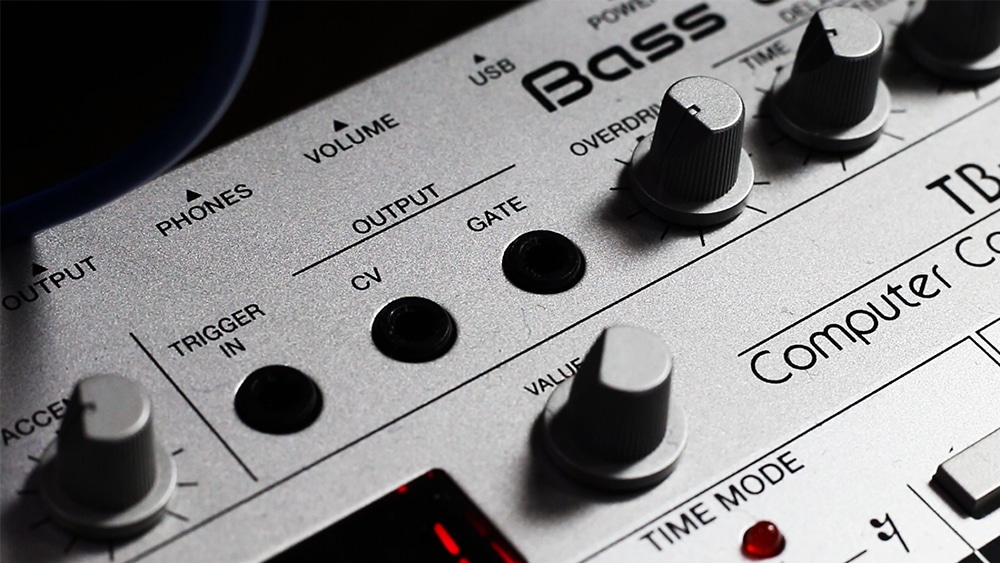
As we mentioned earlier, we are not limited to just CV in relation to controlling our modular. We can also make use of the incredible power of MIDI, to expand and exploit our sound.
Keeping in mind that MIDI sends digital signal and CV uses electrical signals, we need to find a way to get both signals to work together. We can do this using a MIDI-to-CV converter.
CONVERSION
Due to the differences in command language, a MIDI-to-CV converter is crucial when wanting to use external gear, like a laptop or hardware sequencer alongside your modular. Without a MIDI-to-CV converter, your MIDI-less modular will run exclusively off Control Voltage. MIDI allows your modular to become a key studio and live performance instrument.
A MIDI-to-CV converter faithfully converts digital MIDI messages into analog Control Voltage electrical signals. It enables you to connect your external hardware to your modular synth. Making this connection is key to performing live with your modular synth.
Through this MIDI-to-CV connection, you can send Pitch CV and Gate information from an external device to your modular. Some also allow you to control additional parameters like Velocity, Aftertouch, and Mod Wheel operations. It is also a crucial element for keeping your modular synced, or keeping in time with your external gear. Some MIDI-to-CV converters incorporate a MIDI Out, which gives your modular synth the power to act as the master clock for your whole setup.
While converters are a useful tool for full modular exploitation, you may not even require one to get sequencing! Some synthesizers and sequencers come equipped with CV and Gate outputs, as well as a MIDI connection. The video above demonstrates how you can use the TB-03’s famed sequencer to send Pitch and Gate information to a modular synth.
Modular synthesizers require the physical patching between patch points to make use of CV. But there is an option for those that want the freedom of patch points, without the need to always patch up..
Semi-modular vs Modular
You may have noticed the word semi–modular appearing here and there. Perhaps you’re wondering what it means. How is it different to simply, “modular” synthesis? And could it perhaps be the best option for you?
A semi-modular synthesizer has a fixed signal path. This means it can operate without the need for patching, just like a standalone synthesizer voice, similar to the more common synthesizers you are familiar with, i.e. the Roland Juno and Jupiter series. Its key difference to a standard synth though, comes from the additional patch points that allow you to modify and rework the signal path. To access these patch points, we make use of Control Voltage.
The beauty of the semi-modular synth lies in its flexible nature and ability to expand, without being dependent on external patching to produce audio. The result is a highly adaptable instrument, both in application and sound, with the ease of use of a standard synthesizer. This is what sees the semi-modular synth retain popularity with both beginners and synth heads alike.
It is a smart choice for beginners that are feeling overwhelmed by the learning curve. If you are starting out, and are keen to dabble your feet in modular, it would be a safe choice that would not overwhelm, but still satisfy. It is much cheaper than buying the individual components to make up your own modular and requires less time spent researching individual modules.

Incorporating a semi-modular synth to an existing rig expands your capabilities. You also have the benefits of a more “straightforward” synth, in case an entirely modular rig seems like a bit too much for you! A synth like the System-1m is invaluable to any modular rig. It provides additional oscillators, LFOs and envelopes with the patch of a lead. As you learn and become more confident, you can expand on it with a full Eurorack system like the System-500, for even more experimentation, flexibility and control.
Semi-modular systems, like the System-1m, also come with a MIDI input. This allows you to sequence externally without needing to purchase an additional converter. This is one reason why people choose pre-made systems, rather than starting from scratch. If you are working on a tight budget, it’s an ideal way to save money.
In addition, Ableton Live connectivity makes semi-modular rigs like the System-1m a useful studio and live performance tool. You can bring the power of your DAW to your hardware rig. It will increase your capabilities, sound palette and performance ability.
BREAK DOWN (SH-101)
Now let’s break down a standard, fixed signal path, monophonic synthesizer and reveal the typical components you need to make a classic mono synth sound. Using the Roland SH-101 as an example, we can see the modules you would need to recreate a relatively simple signal path.
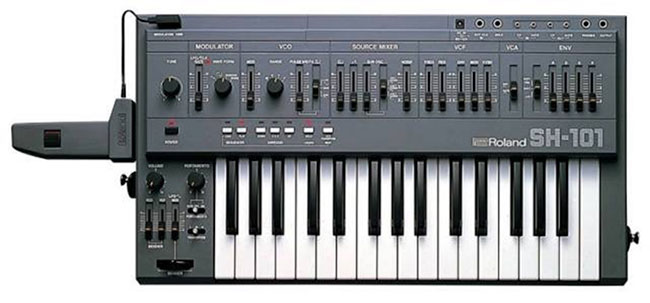
All synthesizers require a sound source. This usually comes from a VCO or Noise source. These will produce the physical voltage required to create audio. The SH-101 hosts one VCO, alongside a Noise source and a dual-octave, sub-oscillator.
These 4 sound sources can be blended in the Source Mixer. This acts in a similar fashion to a standard DJ/audio mixer. We use modules like this to mix audio signals and CV signal, i.e. combining the audio from two different oscillators. They can also combine the CV from two different LFOs to create a more complex LFO.
The audio signal will continue traveling, through the Voltage Controlled Filter (VCF) and into a Voltage Controlled Amplifier (VCA). The SH-101 has only one Envelope Generator. It is shared by both the VCF and VCA sections.

To replicate this same SH-101 patch in a modular system, you would require a Mult module. A Mult module can duplicate the envelope signal sent to both VCF and VCA sections. The SH-101 also features a single LFO section, allowing you to modulate the VCA, and Pitch and Pulse Width of the VCO.
When we begin to understand the amazing things we can do with such a simple signal path, we become aware of the enormous potential in flexibility that a modular synth provides. When breaking this signal path down component by component, we begin to reveal the inherent limitations in fixed signal path synthesizers.
Consider this – you want to modulate the VCA to create a specific rhythmic effect. But, you need a different LFO speed for your desired pitch modulation. You would now require a secondary LFO to set each one to different Rate and Depth settings. This is where modular shines, highlighting the power in signal flexibility. You are free to add as many different LFOs, at varying speeds and waveforms, to be sent anywhere on your modular. You can see how creative and inspiring the results can quickly become.
As you can imagine, things can become expensive quickly and rack real estate begins to become a key point of concern. To replicate the same signal path, you will need to invest in multiple VCOs, LFOs, envelopes, and utilities. This is where dual modules become very useful.
POWER OF DUAL ENERGY
Dual modules, like those found in the System-500 synthesizer, are the perfect way to save rack space and money when first starting out. Your possibilities are broadened significantly with the power of dual modules, and more adventurous, complex patches are easier to achieve.
The System-500 is a powerful, fully analog, modern version of the classic Roland System-100m synthesizer. It faithfully recreates its famed predecessor, while exploiting modern technology for heightened results. Its dual design means you can get the most out of your synth patch, with minimal rack space and cost.

Each module comes with dual offerings – for instance, the 512 contains two identical VCOs. The 521 comes with two Low Pass Filters (LPF) and one HPF (High Pass Filter). The 530 module contains two Amp sections, each with 3 individual inputs for each. Rather than a single LFO and Envelope Generator, the 540 module contains 2 Envelope Generators and an LFO. The Envelope Generators can also be switched to Cycle mode, which basically turns them into two additional LFOs, with the Attack and Decay times controlling the Rate and Shape.
These multi-function designs ensure that you get the most value and flexibility out of your modular system. They are a great choice for those who are limited in rack space, or who are hoping to have as much patching freedom as possible.
Learn more about the SYSTEM-500 modules in our SYSTEM-500 article. You can also learn about the history of Roland’s collaboration with Eurorack heavyweights Malekko in the video below.
Get Patching!
Although most closely associated with electronic music, modular synths can be integrated into virtually any style of music and live performance setup. Artists from diverse musical backgrounds are now using modular synthesizers in a range of innovative and interesting ways. Modular offers a heightened level of power and control from standard fixed signal path synthesizers. They allow you to craft a uniquely individual and distinctive sound.
With groundbreaking new modular systems like the System-500 and System-1m, and an industry constantly growing through incredible innovation, it has never been more accessible and exciting to step into the world of modular. The flexible nature of modular synthesis means that you will forever be inspired by its limitless creative potential.
Find your unique synth voice – who needs classic synth sounds anyway! Alternatively, recreate your favourite patches with the added flexibility of modular components. Master synthesis while defining your own sound with modular.
Related Articles
HOW TO INTEGRATE A MODULAR SYNTHESIZER INTO LIVE PERFORMANCE
INSIDE THE AIRA MODULAR CUSTOMIZER
THE A-TO-Z OF SYNTHESIZER TERMS
AIRA MODULAR: WHAT IS A MODULAR SYNTHESIZER?
AIRA MODULAR: WHAT IS CONTROL VOLTAGE?
8 THINGS TO KNOW ABOUT THE SYSTEM-500 COMPLETE SET
ROLAND ICON SERIES: THE ROLAND SYSTEM-100 SYNTHESIZER
THE ULTIMATE GUIDE TO THE SYSTEM-1M SEMI-MODULAR SYNTHESIZER


